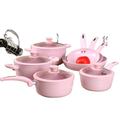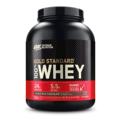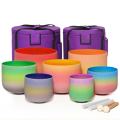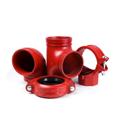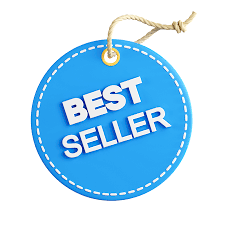Shipping Cargo by Sea: Seller's Sea Freight Guide

Why Shipping Cargo by Sea Matters Now?
If you sell cross-border and plan restocks around campaigns and seasonal swings, shipping cargo by sea is the lever that protects margins and scales inventory. Compared with air, sea freight shipping trades speed for cost efficiency and capacity, making it ideal for bulk orders, regular replenishment, and price-sensitive SKUs. This guide distills how to choose between FCL and lcl sea freight, what truly drives a 40 foot shipping container cost, how to compare quotes, the workflows and timelines you can rely on, and the packing, compliance, and risk controls that keep your pipeline smooth.
Why Shipping Cargo by Sea Still Wins for E-Commerce
-
Unit economics improve as you scale.
As volumes grow, shipping cargo by sea is often the only route that keeps cost per unit competitive. Sea freight shipping frees budget for ads and R&D while enabling healthy prices. -
Capacity and rhythm.
Ocean capacity supports steady replenishment and promotional surges. Many brands blend FCL for the base flow with lcl sea freight for micro top-ups. -
Predictability with buffers.
Once you build a schedule with realistic cutoffs, shipping cargo by sea becomes predictable. Buffers absorb port congestion, weather, and appointment lead times. -
Lower carbon intensity than air.
For sustainability reporting, sea freight shipping typically carries a smaller carbon footprint per unit than air.

FCL vs LCL: Which Ocean Mode Fits Your Order?
FCL (Full Container Load) Essentials
- Equipment: 20GP, 40GP, 40HQ.
- Best for: Volume near or above ~65–70% of a 40HQ, stable replenishment rhythm, lower handling risk during shipping cargo by sea.
- Cost lens: You’ll benchmark against a 40 foot shipping container cost on your lane and then add origin/destination local charges plus final-mile.
LCL (Less than Container Load) Essentials
- Best for: New product trials, split shipments, or shipments below FCL thresholds.
- How it prices: W/M (greater of weight or volume), minimum charges apply, plus consolidation/deconsolidation and CFS handling.
- Risk lens: More touchpoints than FCL, so packaging is critical in lcl sea freight.
3-Step Choice Framework
-
Volume & CBM: Near FCL utilization? FCL often beats lcl sea freight on total landed cost.
-
Time & dwell: FCL can be smoother door-to-door because it may skip some LCL terminal dwell.
-
Destination fees: Some ports have high LCL local charges; that can swing decisions toward FCL even at moderate fill.

What Really Drives a 40 Foot Shipping Container Cost?
Understanding cost drivers helps you book the right week, lane, and service for shipping cargo by sea.
-
Base ocean rate & seasonality
PSS (Peak Season Surcharge), bunker and low-sulfur surcharges can shift a 40 foot shipping container cost by hundreds. Booking close to major retail events or holidays can push rates up. -
Port pair & service type
Direct services cost more but reduce risk; transshipment can be cheaper but slower. Origin clusters (South vs East China) and destination (USWC vs USEC; North Europe vs MED) change the math in sea freight shipping. -
Destination local charges
Terminal handling, documentation, warehouse, customs exam fees, and congestion surcharges often surprise first-time shippers. Ask for destination estimates to reveal the real 40 foot shipping container cost. -
Door delivery & FBA specifics
Drayage, chassis, rail or linehaul, liftgate or appointment fees and FBA compliance affect total cost. A port-to-port quote is not the full shipping cargo by sea picture. -
Timing, reliability, and roll-risk
An ultra-cheap rate with high rollover risk can be expensive if it triggers stockouts. Prioritize dependable sea freight shipping services when inventory risk is high.
How to Read and Compare Ocean Freight Quotes
Standardize scope to compare apples to apples.
- Same ETD/ETA window, origin & destination, same delivery terms (port-to-port vs door-to-door vs FBA), same insurance and customs brokerage assumptions.
- For FCL, standardize container type and free-time assumptions affecting shipping cargo by sea (demurrage/detention).
- For LCL, align CFS origins/destinations and minimum charges across lcl sea freight quotes.
Fields every quote should show
- Ocean base rate, surcharges (fuel/low-sulfur/PSS), origin & destination local charges
- Drayage/rail/linehaul, chassis, appointment/FBA fees
- Insurance and brokerage (if quoted), expected transit time and sailing frequency
- What’s excluded (e.g., duties/taxes, storage, exam fees)
TCO beats spot prices
Evaluate shipping cargo by sea on total landed cost. A slightly higher 40 foot shipping container cost can be cheaper overall if it reduces rollovers, storage, and emergency airlifts.
Request a quote template
Use a line-item template so forwarders fill in the same fields. This is the fastest way to make sea freight shipping quotes truly comparable.
LCL Sea Freight: Costing, Risks, and How to Do It Right
How it's charged
- W/M pricing with minimums, plus CFS consolidation/deconsolidation fees.
- Door or FBA delivery adds truck, appointment, and special-handling fees.
Watch for hidden costs
- Destination documentation, CFS handling, customs exams, appointment re-delivery. Clarify in writing to avoid surprises during lcl sea freight.
Risk & packaging
- Double-wall cartons, corner posts, stretch wrap, moisture control packs, and pallets to ocean standards. Clear CFS and FBA labels are essential in shipping cargo by sea.
Use cases
- New SKU pilots, top-ups between FCL cycles, or distributed dispatch to multiple destinations—all classic LCL sea freight scenarios.
Transit Times and Schedules You Can Actually Plan With
Indicative port-to-port (service-dependent):
- China → US West Coast: ~12–20 days on water
- China → US East Coast (via canal): ~25–40 days
- China → North Europe: ~25–35 days
Door-to-door reality
Add time for drayage, terminal dwell, customs, and delivery windows. For shipping cargo by sea into FBA, appointments add variability. A reliable forwarder schedules truck slots and FBA windows before cargo lands.
Planning buffers
- Off-peak: port-to-port + 2–3 weeks
- Q4/peak or disruption: port-to-port + 3–5 weeks
Typical milestone flow (factory → FBA)
PO → booking → pickup/CFS → export clearance → ETD → ETA → customs/exam → delivery appointment → check-in. Keep this cadence visible to your team for consistent sea freight shipping performance.
End-to-End Workflow: From Factory to FBA/3PL
Pre-Shipment Basics
- Documents: Commercial invoice, packing list, HS codes, certificates where applicable.
- Compliance: Product rules (batteries, cosmetics, food contact), EU EPR programs.
- Insurance: All-risk is recommended for shipping cargo by sea; photo evidence supports claims.
Booking, Trucking, Export
- Incoterms: EXW (you handle pickup/export), FOB (supplier to origin port), DDP (duties/taxes to door). Incoterms define cost/responsibility in sea freight shipping.
- B/L: Telex release vs OBL; ensure consignee/notify are correct.
Destination, Customs, Final-Mile
- Importer of Record: Clarify IOR; your forwarder can coordinate brokers and duty estimates.
- US specifics: ISF/AMS compliance; possible customs exams.
- FBA delivery: Pallet rules, time windows, ASN/appointment. Build it into shipping cargo by sea planning to avoid re-delivery fees.
Packing & Palletizing That Survives the Ocean (Placed Before Pitfalls)
Carton engineering
- Correct edge-crush/burst specs; avoid void space; interlock patterns on pallets.
Moisture control
- Desiccants, VCI protection for metals, sealed inner bags—vital for long shipping cargo by sea voyages.
Pallet standards
- Follow destination warehouse or FBA specs for size, height, and weight. Label clearly for smooth sea freight shipping receiving.
Inspection moments
- Factory QC, container-loading supervision (photos/video), destination spot checks. Evidence accelerates claims if things go wrong.
Common Pitfalls (and How to Avoid Them)
Demurrage & detention (D&D)
- Demurrage = charges for staying at terminal beyond free time; detention = charges for keeping the container outside too long. Avoid by aligning document readiness, customs timing, and delivery appointments within your shipping cargo by sea plan.
Rollovers & schedule slippage
- Overbooking, weather, or documentation errors cause rollovers. Keep alternate sailings on file; sometimes a slightly higher 40 foot shipping container cost buys better reliability.
Documentation errors
- Incorrect HS codes or consignee details trigger holds. Use checklists and a second review before cargo moves in sea freight shipping.
Under-spec'd packaging
- Skimping on packaging is a false economy. Ocean forces are real—engineer for them.

Route Playbook: China → USA/EU for E-Commerce
China → USA
- USWC vs USEC: West Coast is faster; East Coast may reduce inland costs for eastern distribution.
- FBA: ISF accuracy, SCAC codes, pallet guidelines, and tight appointment discipline matter in shipping cargo by sea to Amazon.
China → Europe
- Gateways: Rotterdam, Hamburg, Antwerp, Felixstowe, and others.
- Regulatory: VAT, EPR (packaging/batteries), product safety. Plan paperwork before cargo sails in sea freight shipping flows.
Hybrid stocking
Blend one FCL base flow with recurring lcl sea freight top-ups to stabilize inventory and cash flow.
Cost-Saving Levers Without Killing Reliability
-
Consolidate SKUs & stabilize specs to improve density and reduce W/M surprises in shipping cargo by sea.
-
Alternative ports/services to dodge congestion and reduce drayage.
-
Packaging optimization to trim lcl sea freight charges and protect goods.
-
Book early & define SLAs—space protection and schedule reliability often beat shaving $50 off a 40 foot shipping container cost.
-
Mode mix: Reserve air/rail for urgent splits; keep the bulk on sea freight shipping for margin health.
When Do Air or Rail Beat Sea?
- Air: Launches, high-value goods, or urgent restocks where stockout cost dwarfs shipping cargo by sea savings.
- Rail (China–EU): Middle speed/cost; limited coverage but valuable for certain corridors.
- Use them as tactical complements—then normalize your flow back to shipping cargo by sea.
How Global Vertical Helps (FCL/LCL/DDP to Door & FBA)
- One partner, end-to-end: Factory pickup, export clearance, shipping cargo by sea, customs, and final delivery to 3PL or FBA appointments.
- Mode flexibility: FCL for base loads, lcl sea freight for pilots/top-ups—timed to your promos and replenishment rhythm.
- Cost clarity: Break down your 40 foot shipping container cost by ocean, local, and last-mile so finance can compare true landed costs.
- E-commerce DNA: Labeling, palletization, ASN/appointments, and retailer compliance embedded in every sea freight shipping plan.
FAQs
1) What’s the typical timeline when shipping cargo by sea from China to the US/EU?
USWC ~12–20 days on water; USEC ~25–40; North Europe ~25–35. Add 2–5 weeks for drayage, customs, and delivery windows, especially for FBA.
2) How is lcl sea freight charged and when is it cheaper than FCL?
By W/M with minimums, plus CFS fees and local charges. It’s usually cheaper at lower CBM, for new SKU pilots, or to bridge gaps between FCL cycles.
3) What factors impact a 40 foot shipping container cost the most?
Base ocean rate and surcharges, port pair and service type, destination local fees, last-mile delivery, and the reliability you choose in sea freight shipping.
4) Which Incoterms work best for sea freight shipping to FBA?
FOB is common (supplier to port; you control the forwarder). EXW offers full control but more tasks; DDP shifts duties/taxes to the forwarder for a simplified experience.
5) How do I avoid damage and D&D in shipping cargo by sea?
Engineer packaging for ocean conditions, lock documents early, plan customs, and pre-book appointments. Keep alternate sailings for resilience.
Next Steps
For growing sellers, shipping cargo by sea remains the most dependable way to scale inventory while protecting margins. Choose the right mode—FCL when volume justifies it, lcl sea freight when testing or topping up—then manage the details: packaging, documents, customs, and FBA appointments. Compare quotes on total landed cost, not just the ocean number, and plan buffers so your sea freight shipping stays predictable even in peak.
Global Vertical, based in Shenzhen, specializes in shipping cargo by sea for cross-border e-commerce. With FCL, LCL sea freight, and DDP to door, we coordinate factory pickup to final delivery or FBA check-in—end-to-end. Share your shipment details, and we’ll map a lane and schedule that fit your launch calendar and growth plan, complete with a transparent 40 foot shipping container cost breakdown you can trust.

